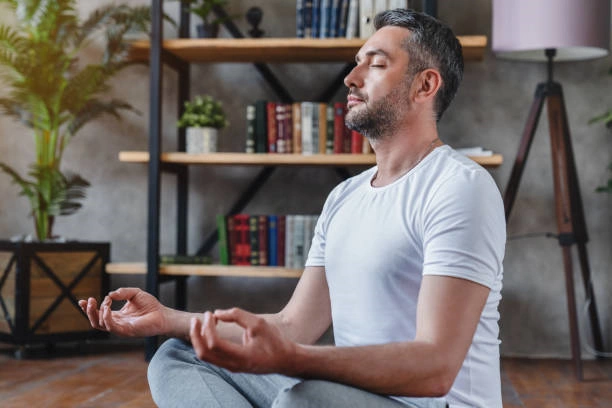6 Practical Meditation Techniques
When you enter a meditative state, the part of the brain responsible for rational thinking is subdued, allowing imagination, creativity, and inspiration to flow freely. At the same time, the body and mind experience a sense of calm, joy, and deep relaxation.
1. Sit Still for 2 Minutes
Meditating for just two minutes may seem simple, even trivial, but it’s an excellent starting point. Begin by sitting for two minutes every day for a week. Gradually, you can increase the time. This method of slowly extending your meditation sessions is highly effective, helping you to ease into the practice and enjoy it more as you go.
2. Straighten Your Spine
When you meditate, it’s essential to keep your spine straight. This is important because if your spine is slouched, you may feel sluggish or drowsy. As you become more focused during meditation, you’ll feel as if your straight spine acts as a channel between heaven and earth, allowing energy to flow smoothly through your body. By maintaining a straight posture, you can enhance the benefits of meditation, increasing both your physical and mental calmness and relaxation.

3. Body Scan
If you feel restless when you sit down, try doing a body scan. This helps calm your nervous system and release tension. Start by focusing on the toes of your left foot. Notice their presence, temperature, and texture without judging or changing anything—just observe.
Slowly shift your attention to other parts of your left foot, like the sole, heel, and ankle, then move to the right foot. Gradually bring your attention to your legs, pelvis, abdomen, chest, arms, neck, and head. If you notice any areas of tension or discomfort, use deep breathing and awareness to relax them. Continue scanning each part of your body until you feel relaxed and grounded.
4. Focus on Your Breathing
During meditation, practice slow, deep breathing. Inhale deeply into your abdomen, then exhale. As you inhale, imagine fresh energy entering your body, and as you exhale, release tension and stress. After taking your first breath, pause for a moment, then count “one” as you exhale. Repeat this process, counting up to ten, then start over from one.
During meditation, thoughts will inevitably come and go. When you notice your mind wandering, gently bring your attention back to your breath.
5. Label Your Thoughts
Label any thoughts that arise during meditation. As thoughts or feelings appear—and they will—spend a little time with them. Then, give them a label, such as “work-related thoughts,” “negative thoughts,” “regrets from the past,” or “worries about the future.” Acknowledge your thoughts, sit with them briefly, and then return your attention to your breath.
Each time you identify your thoughts, you make progress in your meditation. Over time, you’ll become a keen observer of your inner world.
6. Follow Guided Meditation
Following guided meditation is an excellent method, especially for beginners. It helps you quickly learn meditation techniques and keeps you focused during practice. Powerful and effective guided meditation can recharge your life and awaken your inner strength.








